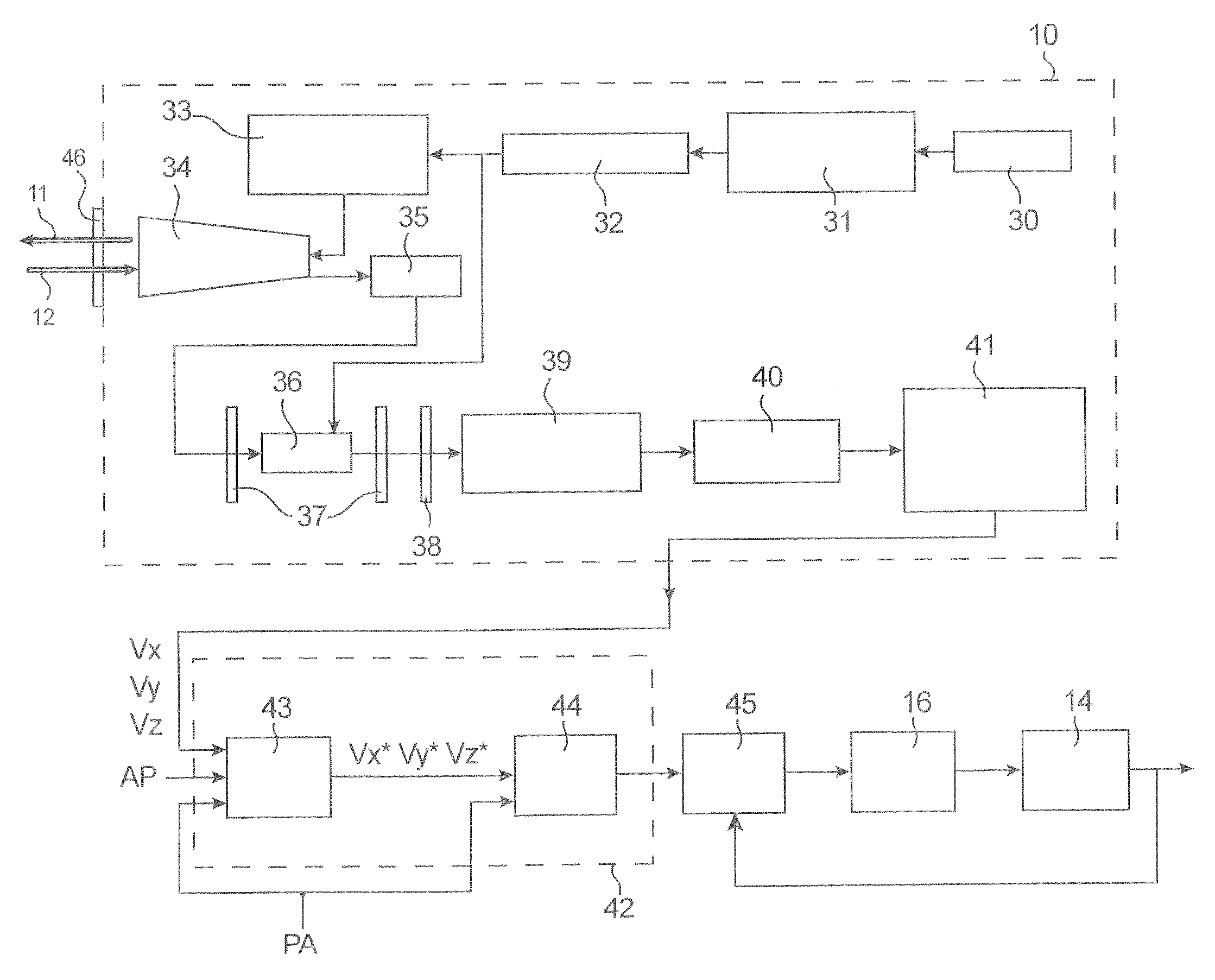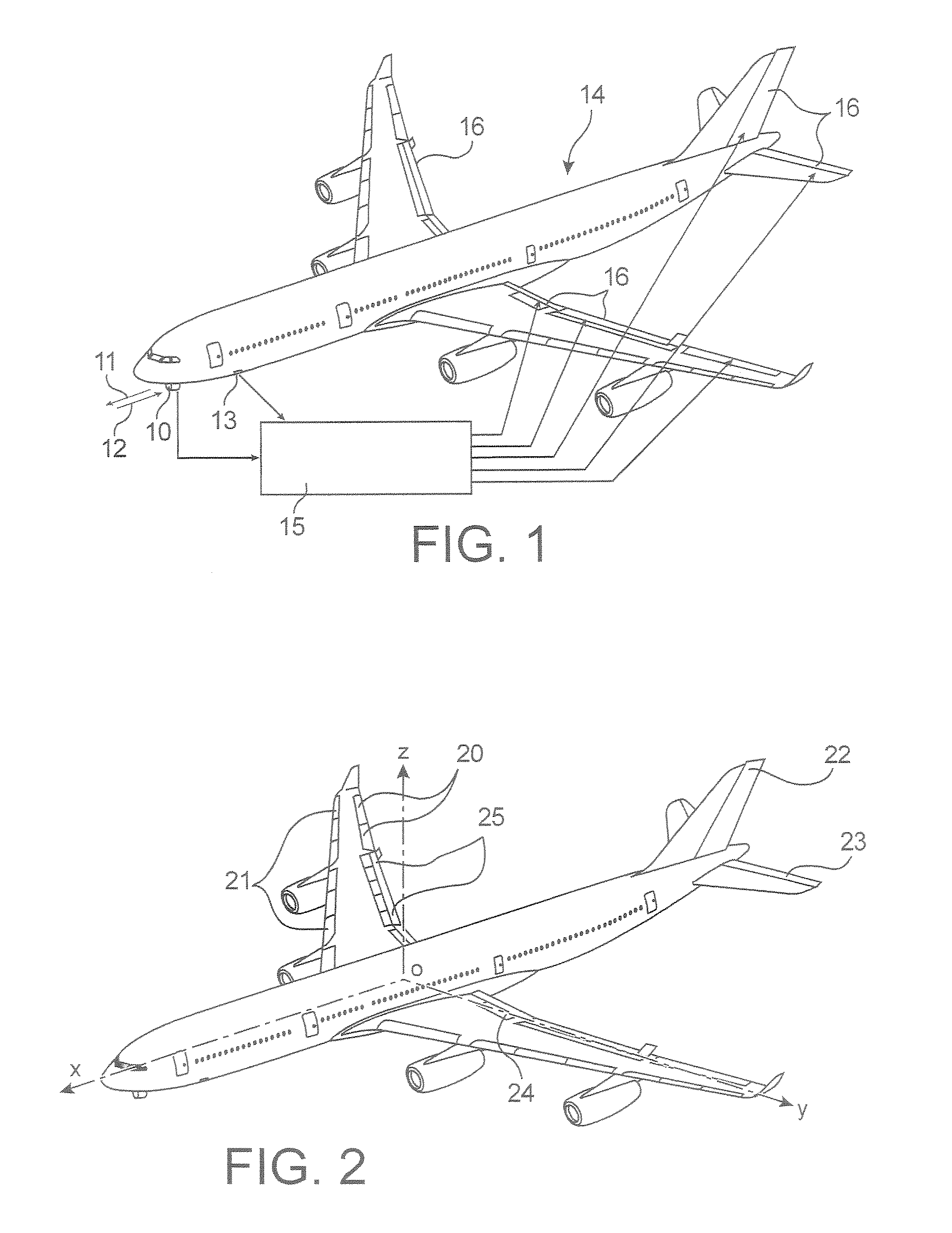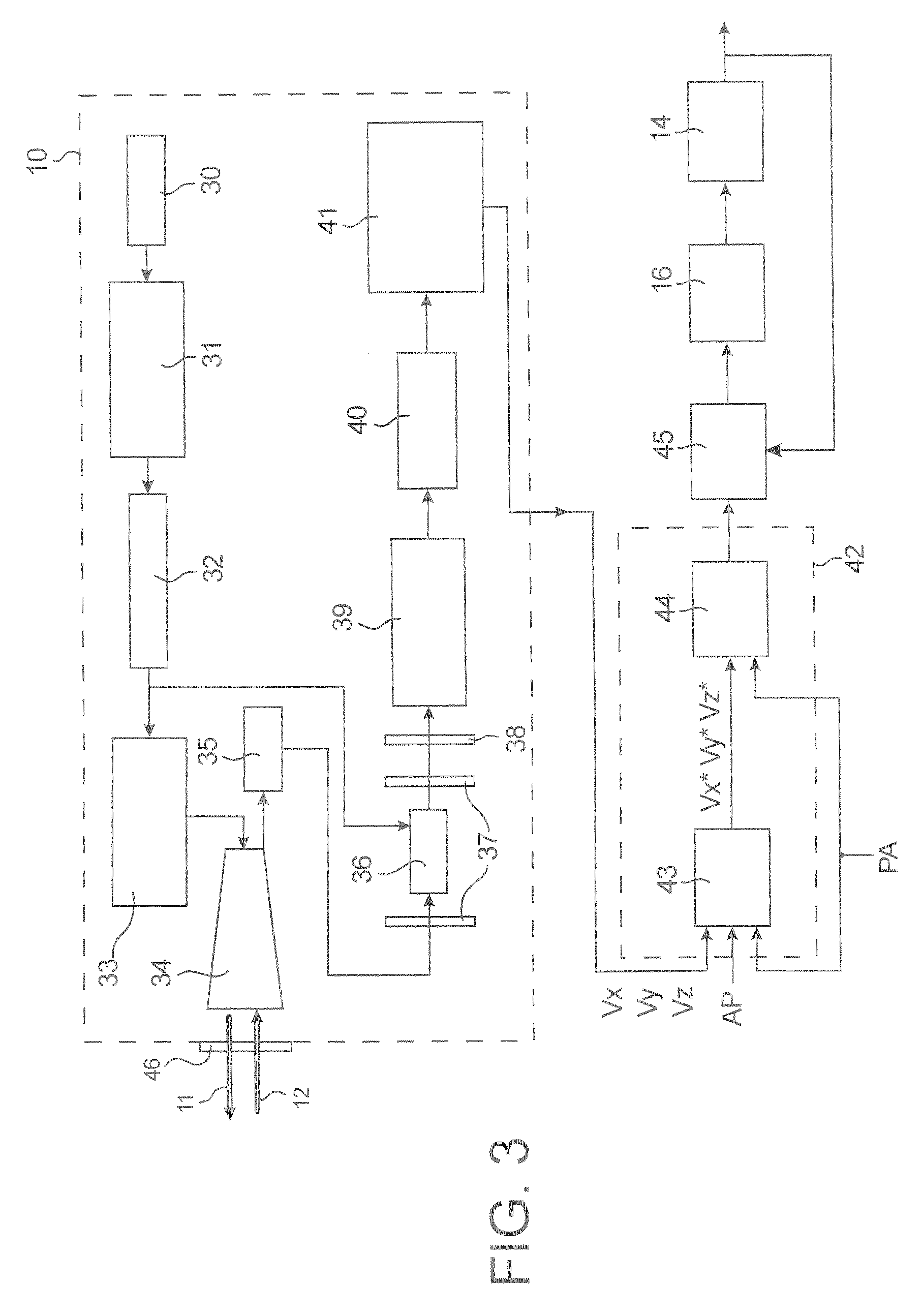System for measurement of projected turbulence downwind of an aircraft
a technology for aircraft and turbulence, applied in the direction of instruments, ict adaptation, reradiation, etc., can solve the problems of not being able to obtain a total deflection of the surface, the distance between the nose and the wings cannot allow a phase advance of more than 100 ms, etc., to reduce the mass of the aircraft structure, reduce the fatigue load, and reduce the sizing charge
- Summary
- Abstract
- Description
- Claims
- Application Information
AI Technical Summary
Benefits of technology
Problems solved by technology
Method used
Image
Examples
Embodiment Construction
[0028]As shown in FIG. 1, in the system of the invention, the signals issued by a lidar 10, which transmits a laser beam 11 forward and receives the backscattered beam 12, as well as signals issued by sensors 13 of the airplane 14, are entered into the flight control computers 15, which give the orders to the flight control surfaces 16.
[0029]As shown in FIG. 2, these flight control surfaces 14 can thus be:
[0030]the wings 20, which are control surfaces for roll or lateral control, which give a moment with respect to the axis Ox (airplane axis),
[0031]the leading edge flaps 21, which are used at take-off and approach to back up the stall position of the wings,
[0032]the rudder 22, which is a yaw control surface or a rudder, which gives a moment with respect to the axis Oz,
[0033]the elevators 23, which are pitch control surfaces or elevators, which give a moment with respect to the axis Oy,
[0034]the “spoilers”24, which are used primarily at larding to keep the airplane on the ground and ...
PUM
 Login to View More
Login to View More Abstract
Description
Claims
Application Information
 Login to View More
Login to View More - R&D
- Intellectual Property
- Life Sciences
- Materials
- Tech Scout
- Unparalleled Data Quality
- Higher Quality Content
- 60% Fewer Hallucinations
Browse by: Latest US Patents, China's latest patents, Technical Efficacy Thesaurus, Application Domain, Technology Topic, Popular Technical Reports.
© 2025 PatSnap. All rights reserved.Legal|Privacy policy|Modern Slavery Act Transparency Statement|Sitemap|About US| Contact US: help@patsnap.com



